Top 10 Foods to Watch in 2011
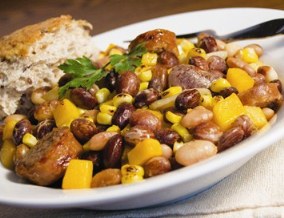 Courtesy of FoodChannel.com
Courtesy of FoodChannel.com
Pie, sausage, nutmeg and moonshine top the list.
In the food business, everyone’s looking for the “next” this, or the “new” that. Here are the foods and flavors we see making noise in the new year.
1. Small Pies. Pie, of course, has been around forever, but 2011 could be the Year of the Pie. Some are already calling it the “next cupcake.” We say, yes, pies will be hot in the coming year, but look for smaller pies to make it big—in both sweet and savory varieties.

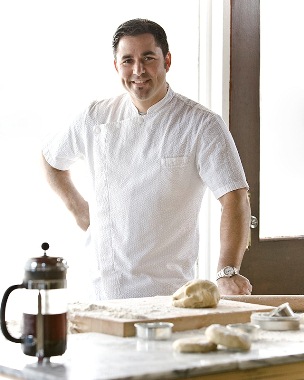 David Guas, owner of Bayou Bakery, Coffee Bar & Eatery in Virginia, learned early on to shut up and listen.
David Guas, owner of Bayou Bakery, Coffee Bar & Eatery in Virginia, learned early on to shut up and listen. Using an evaluation form makes a difference in the way students work in small groups, encouraging them to provide feedback to each other.
Using an evaluation form makes a difference in the way students work in small groups, encouraging them to provide feedback to each other.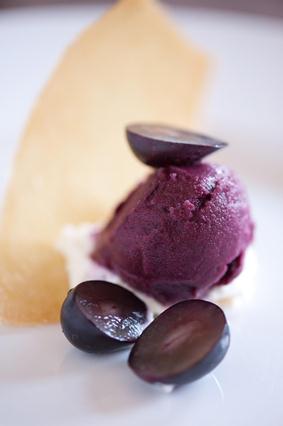 The Culinary Institute of America and Grapes from California introduce an online learning module with innovative menu applications for table grapes.
The Culinary Institute of America and Grapes from California introduce an online learning module with innovative menu applications for table grapes. A tool for exploring sustainable seafood.
A tool for exploring sustainable seafood.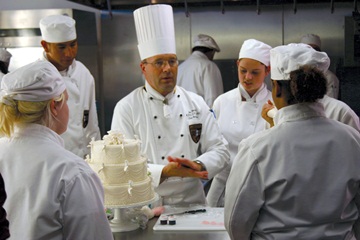 “How can I afford college?” is a common question for many high-school students considering plans for the futures amid rising tuition costs and a challenging economy. The American Academy of Chefs (AAC), the honor society of the American Culinary Federation (ACF), the nation’s largest professional chefs organization, and Baltimore International College (BIC), one of the mid-Atlantic's leading colleges, are pleased to announce two new scholarships available for students accepted to BIC, totaling $20,000 over four years.
“How can I afford college?” is a common question for many high-school students considering plans for the futures amid rising tuition costs and a challenging economy. The American Academy of Chefs (AAC), the honor society of the American Culinary Federation (ACF), the nation’s largest professional chefs organization, and Baltimore International College (BIC), one of the mid-Atlantic's leading colleges, are pleased to announce two new scholarships available for students accepted to BIC, totaling $20,000 over four years. Tyson Foods' Food Service division announced on December 16 that it will donate 30,000 pounds of food to two metro New Orleans organizations, Café Reconcile and the Second Harvest Food Bank of Greater New Orleans. Donations are being made in support of the International Foodservice Editorial Council’s (IFEC) community-outreach efforts in New Orleans during its annual conference.
Tyson Foods' Food Service division announced on December 16 that it will donate 30,000 pounds of food to two metro New Orleans organizations, Café Reconcile and the Second Harvest Food Bank of Greater New Orleans. Donations are being made in support of the International Foodservice Editorial Council’s (IFEC) community-outreach efforts in New Orleans during its annual conference.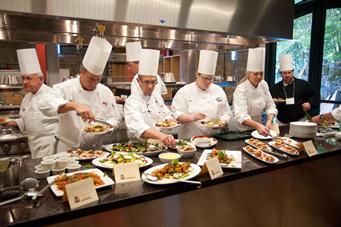 Chefs from leading foodservice and retail chains met at The Culinary Institute of America in Napa Valley in October for a custom seminar centered on U.S. Potatoes. Themed “Mediterranean Inspiration, Culinary Innovation,” the seminar took chefs through a culinary odyssey along the 38th parallel—the latitude line that runs right through the Mediterranean and the California Wine Country.
Chefs from leading foodservice and retail chains met at The Culinary Institute of America in Napa Valley in October for a custom seminar centered on U.S. Potatoes. Themed “Mediterranean Inspiration, Culinary Innovation,” the seminar took chefs through a culinary odyssey along the 38th parallel—the latitude line that runs right through the Mediterranean and the California Wine Country. The California Milk Advisory Board recently announced a partnership with the Los Angeles Unified School District (LAUSD) to educate students about the benefits of milk and offer awards for collecting Real California Milk seals. The Real California Milk Supports Real California Schools program provides information to elementary students in the state’s largest school district about healthy eating and drinking choices and offers a chance to win prizes for themselves and their classrooms. LAUSD students and their families are encouraged to look for the Real California Milk seals in their local stores and are challenged to collect these seals for a chance to win Wii Fit™ game consoles, books and $500 classroom awards.
The California Milk Advisory Board recently announced a partnership with the Los Angeles Unified School District (LAUSD) to educate students about the benefits of milk and offer awards for collecting Real California Milk seals. The Real California Milk Supports Real California Schools program provides information to elementary students in the state’s largest school district about healthy eating and drinking choices and offers a chance to win prizes for themselves and their classrooms. LAUSD students and their families are encouraged to look for the Real California Milk seals in their local stores and are challenged to collect these seals for a chance to win Wii Fit™ game consoles, books and $500 classroom awards.